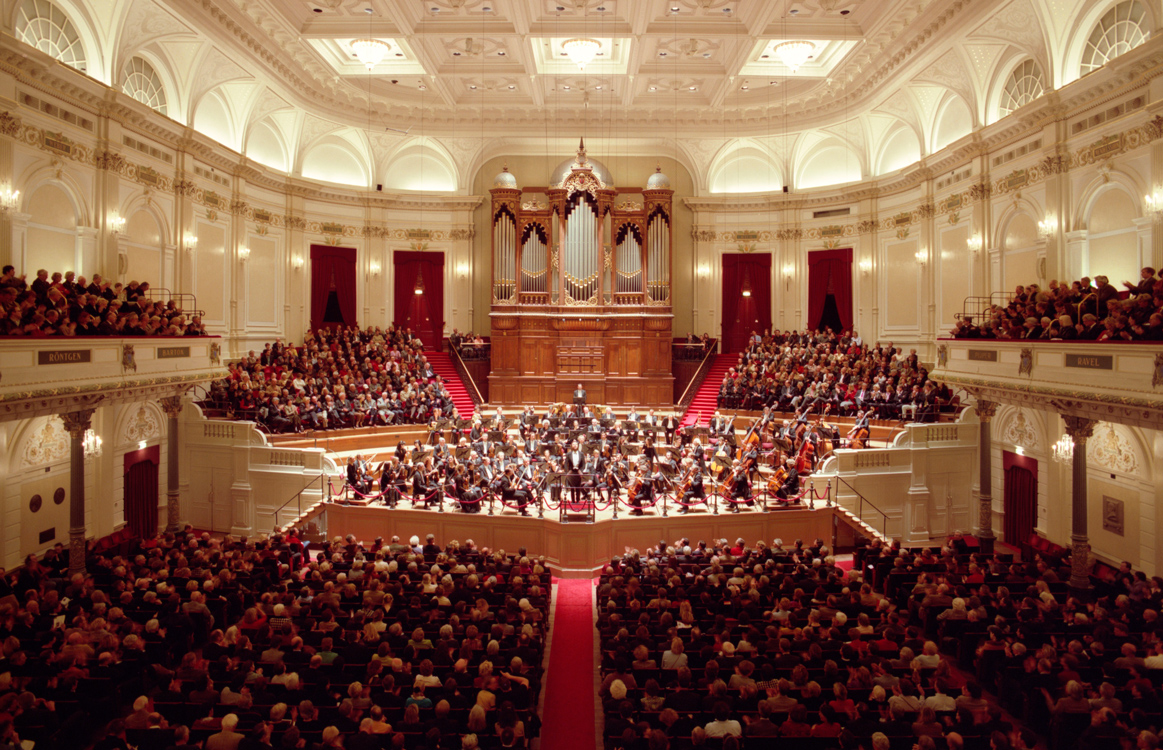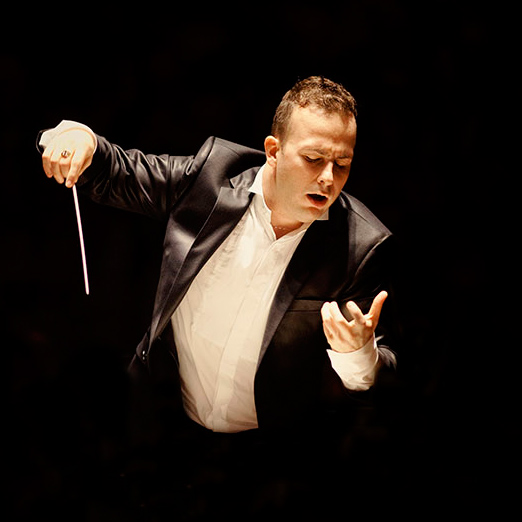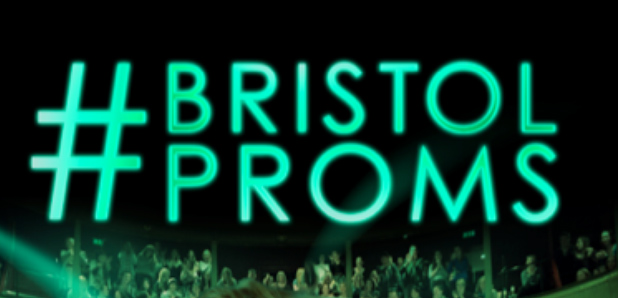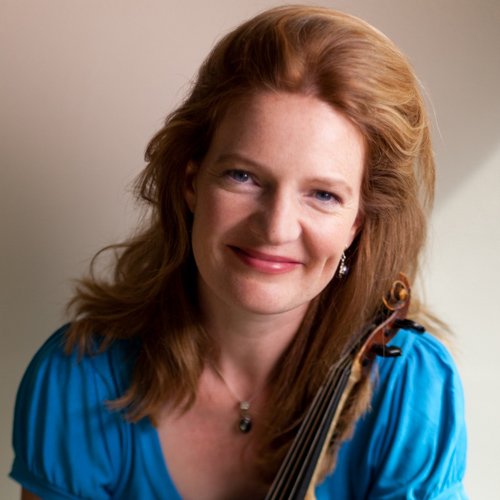What’s wrong with the classical concert experience in the 21st century?
Philip Clark
Monday, October 19, 2015
‘If classical music does indeed have an image problem, what image ought it adopt? What must classical music now pretend to be?’

This is an edited transcript of a talk given by Philip Clark last week at the Swansea International Festival...
Let me open with a confession. This is my first visit to Wales for forty-two years and until earlier this year I didn’t actually realise I’d been to Wales before. When my mother died in January amongst her things I found a book of Dylan Thomas poems that my parents had bought during a holiday to Wales in 1972. Inside she inscribed my age – and so I can tell you that I was six months old the last time I was in Wales.
But I do have a connection-once-removed to Wales that feels pertinent to the subject under discussion tonight – about the classical concert experience, its relevance or otherwise, in the 21st century. I was a friend of the music writer and critic John Warnaby who lived in Port Talbot in a terraced house which, against all the odds, he transformed into a Welsh hub of the European avant-garde. I met John, who died in 2007, when I was a music student at Huddersfield University in the early 1990s. He made the pilgrimage once a year to the Huddersfield Contemporary Music Festival and indeed spent most of the year footslogging between new music festivals around the UK and central Europe.
Our friendship was largely transacted by cassette. Every few weeks a jiffy bag full of them would drop through my letterbox which contained the latest must-hear premieres from festivals in Germany, Austria and Holland – composers like Rihm, Spahlinger, Kagel, Dillon and Globokar. And when I said that John transformed Port Talbot into a hub of the European avant-garde, I wasn’t joking. Long before high-speed broadband and, I suspect, using a less than pristine PC, John managed to wire and worm his way into European radio stations and make very high quality recordings of live broadcasts. Then he would send me copies. And, although I might be deluding myself, I like to think that John and I were the first people in the UK to hear many premiere performances of new pieces by the likes of Kagel and Lachenmann.
But there’s one thing I haven’t told you about John that, thinking about what some people want the concert experience to be, is significant. John was blind. As far as I could tell, and we never talked about it, he had no sight in either eye. He travelled around the world dependent on his partner, and with a contemporary music lover in every port, to help him negotiate transport. And often I wonder what John would have made of schemes designed to sex-up the classical concert – to broaden its appeal and cleanse its image.
Because we live in a culture, I think, where visual stimuli are in the ascendant, sometimes at the cost of sound. Sound is no longer enough. That sound can be judged as sound – that music is a worthy pursuit in and of itself is, in the most extreme cases, being casually dismissed. Classical music now must aspire to offer spectacle – whether a particular piece can take it or not.

In his keynote talk at this year’s Classical NEXT festival, the Canadian conductor Yannick Nézet-Séguin, Music Director of the Philadelphia Orchestra, offered his thoughts about this same subject. Nézet-Séguin is a fine musician who is entirely sincere about his art, but his recipe for how to ‘revitalise’ classical concerts felt disappointingly prosaic. For decades, all the talk has been about how musicians dress; about the timing and duration of concerts; about the historical distance that audiences feel from classical music, whether it be Bach or the premiere of a new piece completed last week. Nézet-Séguin reiterated that musicians need to speak to audiences, to explain how a 90-minute Bruckner symphony hangs together. ‘It’s all about communication,’ he said.
Worthy stuff, but where Nézet-Séguin’s words fall down is that orchestras and ensembles have been experimenting with these strategies for years. I arrived in London in the mid-1990s at a point where you couldn’t go to a London Sinfonietta concert without the senses being assaulted by an array of embarrassingly bad shirts. Orchestras have experimented with the length and timing of concerts – with bite-size gigs designed not to frighten the horses; with rush-hour concerts; with late night and lunchtime concerts. And no one could object to any of that.

As Nézet-Séguin talked about experimenting with the format and repertoire of concerts, my mind turned inevitably towards the Bristol Proms, the early summer season of concerts, now in its third year, promoted by Universal Music, who own classical record labels Deutsche Grammophon and Decca. The Bristol Proms are built around audience interaction. Artists are encouraged to talk to audiences, the spin given that this represents a new idea. If you want to text or email during a Bristol Proms concert, that’s fine; if you want to instigate a conversation with a fellow audience member during a concert, no problem.
But one concert at this year’s festival showed how the Bristol Proms can sometimes privilege the event – the feel-good of the spectacle – above the music. Music writers like myself received an excitable email about ‘immersive Beethoven’ – which turned out to be a semi-lit performance by the Sacconi String Quartet of Beethoven’s Op 131 String Quartet. Darkness became a metaphor for Beethoven’s deafness, and individual quartet members were wired into various camera angles which beamed images of their faces around the hall so audiences could see the emotional expression of the performers.
Tom Morris, who runs the Bristol Proms, is a distinguished theatre director and perhaps you might expect him to dramatise and ‘stage’ music. But you gerrymander the format of a classical concert at your peril. The audience could see the performer’s faces emoting as they played; but they might not wanted to have heard what they were playing. Reports suggested the performance suffered numerous slips of ensemble and intonation because the players couldn’t see each other. The audience attending that night heard less of a performance than had the concert been played under normal conditions. Beethoven’s piece suffered.
Here’s a radical thought for Morris to chew on. The fabric, the sound, the structural daring of a piece like Beethoven Opus 131 tells you everything you could possibly need to know about Beethoven, about his deafness, about his increasing sense of isolation, about the way that deafness transformed Beethoven’s internal hearing and mapping of sound. It’s all there in the music. And I would argue that the Bristol Proms – by consciously dramaticising emotion – actually took listeners further away from the core emotional and sonic resonance of Beethoven’s music.
As far as the mainstream press is concerned, this ongoing debate about the classical concert experience has been distilled into a single question – is it acceptable, or not, for audiences to applaud between movements, a question I consider to be as relevant as asking whether one should vote for Jeremy Corbyn, not because of his world-view or policies, but because he’s the first Labour leader since Kier Hardie to have a beard. Would we really want our politics framed around the question: ‘Is it acceptable for a leader of the opposition to have a beard?’ Applause has become the default subject of classical music blogs. But I’ve never heard a single person – not one – say they won’t go to a classical concert in case they clap in the wrong place. All this stuff – plunging string quartets into the dark, worrying about what shirts to wear or applauding between movements – speaks of a poverty of ideas. If you have nothing to say about content, talk instead about procedure.

Recently on Twitter I bumped heads with the BBC Radio 3 presenter Suzy Klein who, during a Radio 2 programme designed to introduce listeners to classical music, said ‘Classical music still has an image problem’ – which is a statement well worth breaking down.
When did this image problem start to show itself? Did Mozart suffer an image problem when he premiered the Jupiter Symphony? Stravinsky when the premiere of The Rite of Spring was kicking off around him? Did Stockhausen and Boulez care about image when they were unleashing their 12-tone revolution? Or Reich and Glass during the Salad Days of minimalism? But classical music’s alleged image problem has become the mainstream media narrative – a misinformed opinion continually reported as fact. Classical music is elitist, stuffy, obscure and lacks relevance. But if classical music does indeed have an image problem, what image ought it adopt? What must classical music now pretend to be?
For a moment, I want you to suspend your disbelief as I flip the argument on its head. Try it this way round: there is absolutely nothing wrong with classical music. It cannot pretend to be anything other than it is. And perhaps it’s the wider cultural environment which surrounds classical music that has a problem.
In a culture increasingly obsessed with ephemeral celebrity, fed by a spin drier of rehashed PR trivia presented as ‘news’, where sport is the new religion, where Saturday night fluff like Strictly Come Dancing is analysed seriously and given acres of press coverage, then a cultural landscape invested in supporting all that activity damn well ought to have a problem with classical music – with its difficultly, with its emotional ambiguity, with its allusiveness, with its celebration of individuality, with its refusal to conform, with its ability to move our emotions beyond something that can be controlled and manipulated into turning a profit.
The Channel 4 News journalist Paul Mason, who as it happens trained as a composer, said in a recent interview: ‘Music – I mean the classical music I studied – taught me above all: no act of imagination is futile. Music is the imagination running wild, through a landscape that is only colour and emotion. Its mere existence refutes the demand of neoliberals for us to be acquisitive, selfish individuals.’
Which sounds like a ringing manifesto to me – and as we think about the future of the classical concert, we need to be far sharper in our definition of what classical music actually is. Just as the word ‘jazz’ has become an envelope term applied haphazardly to all points between Frank Sinatra and the wildest frontiers of free improvisation, ‘classical music’ has come to symbolise everything from Machaut motets to the musique concrète of Pierre Henry, from André Rieu to Pierre Boulez – it’s all, somehow, ‘Classical’.
Julian Lloyd Webber, now principal of the Birmingham Conservatoire of Music, spoke recently of how we should consign ‘classical music’ to the dustbin of useless phraseology and – again – his use of language is revealing. ‘Musicians need to think outside the box and push boundaries, to work cross-genre with rock or jazz musicians, or be experimental,’ he said.
Putting aside that middle-management speak about thinking outside boxes, the very idea that suddenly you can ‘be’ experimental as a lifestyle choice is as dubious as the notion that you could suddenly have a sense of humour – or speak Japanese. Because to experiment with music in any meaningful way, you need to have a deep understanding of how it operates technically and emotionally.
What I’ve called in my writings ‘pretendy’ classical music serves up the spectacle of classical music – you see an orchestra or an ensemble on stage, you see opera singers producing vaguely operatic sounds as they open their mouths. But invariably tepid cross-over projects exist precisely because musicians have failed to grapple with the big questions at play here. Fusions of minimalism, ambient electronica, pop structures drizzled with world music ‘flavas’ – Karl Jenkins, Max Richter, Ludovico Einaudi, Roxanna Panufnik – have become a ubiquitous sub-genre with relevance to the future of classical music only in the sense that EL James is relevant to the future of the novel. No boundaries are being pushed at all. Instead, this is a corporate, boardroom idea of music designed specifically to shift units of CDs.
I agree with Lloyd Webber in one sense: classical music is not a particularly useful term with which to describe this activity of musicians playing and singing music written over the last 400 years. But let’s never allow that tradition to collapse into beige crossover fusion. Rather than think outside boxes, musicians need to understand what’s in their own box before considering what might lie beyond them.
If you’re familiar with my writing – from magazines like Gramophone and The Wire – you might find that statement rather surprising. Since I started writing professionally in 1999 I’ve been obsessed with tunneling inside music and trying to discover points of technical and aesthetic connection between, for instance, the practice of free improvisation and various strands of the avant-garde. The ‘English’ music I feel closest to is not Elgar or Vaughan Williams, but the visionary Blakeian pop of The Kinks and the improvised music of AMM and Derek Bailey. I admire the music of Michael Tippett and Michael Finnissy because it gives a damn that English schools of composition too often look inwards.
Yes, music is at its best and most creative when it refuses point blank to exist in the stylistic world it already knows. But, no, that is absolutely not the same thing as this nebulous world of major label crossover music currently being dished up as ‘classical’ music. When recently I read the blogger Norman Lebrecht say in connection with the Bristol Proms that labeling music as ‘classical music’ is missing the point – ‘It’s not classical. Music is music. The moment you start putting categories to things, you diminish them’ – a little part of me died. Because exactly the opposite is true.
An example: if a composer wants to work with jazz, what can that mean? You could, of course, concoct a score that deals superficially with the surface cliché of jazz – those melodic hooks, stock chord sequences and wah-wah trumpet sounds that evoke classic Herman Leonard photographs of smoky jazz clubs populated by drug ridden, down on their luck musicians.
But categorising jazz begins to make sense of it creatively. Is this piece you want to write riffing off ideas from early ‘Classic jazz’, from the jazz of Jelly Roll Morton or Louis Armstrong? Or is interested in bebop? The journey between Louis Armstrong and Charlie Parker is long and complex; but even if your piece is commenting on bebop, do you mean the purist bop of Charlie Parker and Dizzy Gillespie, or the bop of Thelonious Monk, with its references to stride piano that crash at the very brink of Modernity – or with the so-called ‘Hard bop’ of Lee Morgan and Art Blakey? To compose with this material you must know the difference. And perhaps your composed response might want to subliminally imply that the harmonic and rhythm techniques of bebop were mirrored in the music surrounding it – the rhythmic smack in face typical of Stravinsky’s music or the harmonic smoke-and-mirrors of Messiaen. Only when engaging with music rigorously can you start to look beyond categories; only then do you realise that Monk was rooted in bop but actually had little to do with it; only then can you understand how far Tippett’s vision of the symphony moved outside any idea of what an ‘English symphony’ could be.
That music is now post-genre, that with their bullet-proof techniques musicians can play Haydn with the same facility as they can play Jimi Hendrix or improvise, is dangerous nonsense. Music is more subtle and nuanced than that, and the major problem with ‘classical music’ as it is being sold and marketed in concert halls is that the term has too often come to mean a very carefully controlled repertoire that begins somewhere around Haydn and ends with Mahler and Stravinsky. Earlier music and later music are occasional interlopers. The Classic FM Hall of Fame shuffles around the same handful of ‘masterworks’ each year. The Lark Ascending or Elgar’s Nimrod– which is it this year, pop-pickers? As if it mattered.
This is a big ask I know, especially as it sails directly against the prevailing cultural wind, but we need to be more musically articulate than that, and refuse to accept the doublespeak that any of this pretendy classical music represents any future at all. We need to speak up for classical music, and defy the idea that video game music is, as I once heard a classical music exec say, ‘the new classical’.

In the past few weeks I’ve interviewed two remarkable musicians whose work illuminates what I’m talking about. The Baroque violinist Rachel Podger has devoted her life to Baroque music – to exploring Bach, Vivaldi, Biber, Telemann et al with hairline clarity. She’s thought carefully about appropriate tuning systems for Bach's music. Which tuning system is appropriate for Bach? Is the tuning appropriate for a Brandenburg Concerto the same as for the B Minor Mass? And playing Bach using Baroque tuning systems and on period instruments opens up a whole can of stylistic worms, requiring a radical rethink of how rhythmic flow and ornamentation operates. When I interviewed the Hilliard Ensemble, they spoke of their problems with performing Lassus. They couldn’t get the tuning to work until the realisation dawned that the keyboards with which he would have worked were tuned with slightly sharpened fourths – and when they sharpened the fourths it worked beautifully.
Which is why soundbites suggesting that ‘music is music’ are nonsense. Music is carefully codified by the conditions that surround it – and these you must to respect.
Last week I spoke to the singer Elaine Mitchener whose new piece Industrialising Intimacy will be touring the UK later this year. Mitchener has a background in modern composition, but is known as a free improviser – a vocalist who improvises with her voice. She recently became interested in how body movements affect her voice as she’s improvising and has worked with the chorographer Dam van Huynh to invent a rigorous practice of movement that will alter the colours and tone of her voice. Her new piece is anchored around compositional frameworks composed by herself, George Lewis and David Toop around which she will improvise.
Had I been talking to you next month, I might well have hit you with different examples. But Rachel and Elaine – who could hardly orbit more different musical worlds – have filtered their art down to essentials. They have reinvented their idea of what a concert can be through sheer belief in what they do. And rather than impose gimmicks onto a Beethoven string quartet, or trying to fool people into believing that the musical equivalent of fast food contains any nourishment, they start with the music. They build concerts from the music up. Podger’s take on Bach finds an expressive world too often lost when he is played on modern instruments; Mitchener’s piece forces our idea of what a musical experience can be to shift through the breadth of her interests. Boundaries crumble because they have no choice.
Deconstructing genres means you can dive forever deeper, cutting into styles and finding endless nuances until music becomes a malleable putty which with you can work. The great thing about putty is that it can be easily mixed – nobody particularly notices the joins, but individual strains of colour retain their identity. That classical music ‘still has an image problem’ I find chillingly dystopian, the implication being that classical music will only stop having its image problem when it learns to conform to the fickle whims of fashion and of the market.
And that really would mark the death of classical music and of the classical concert.











